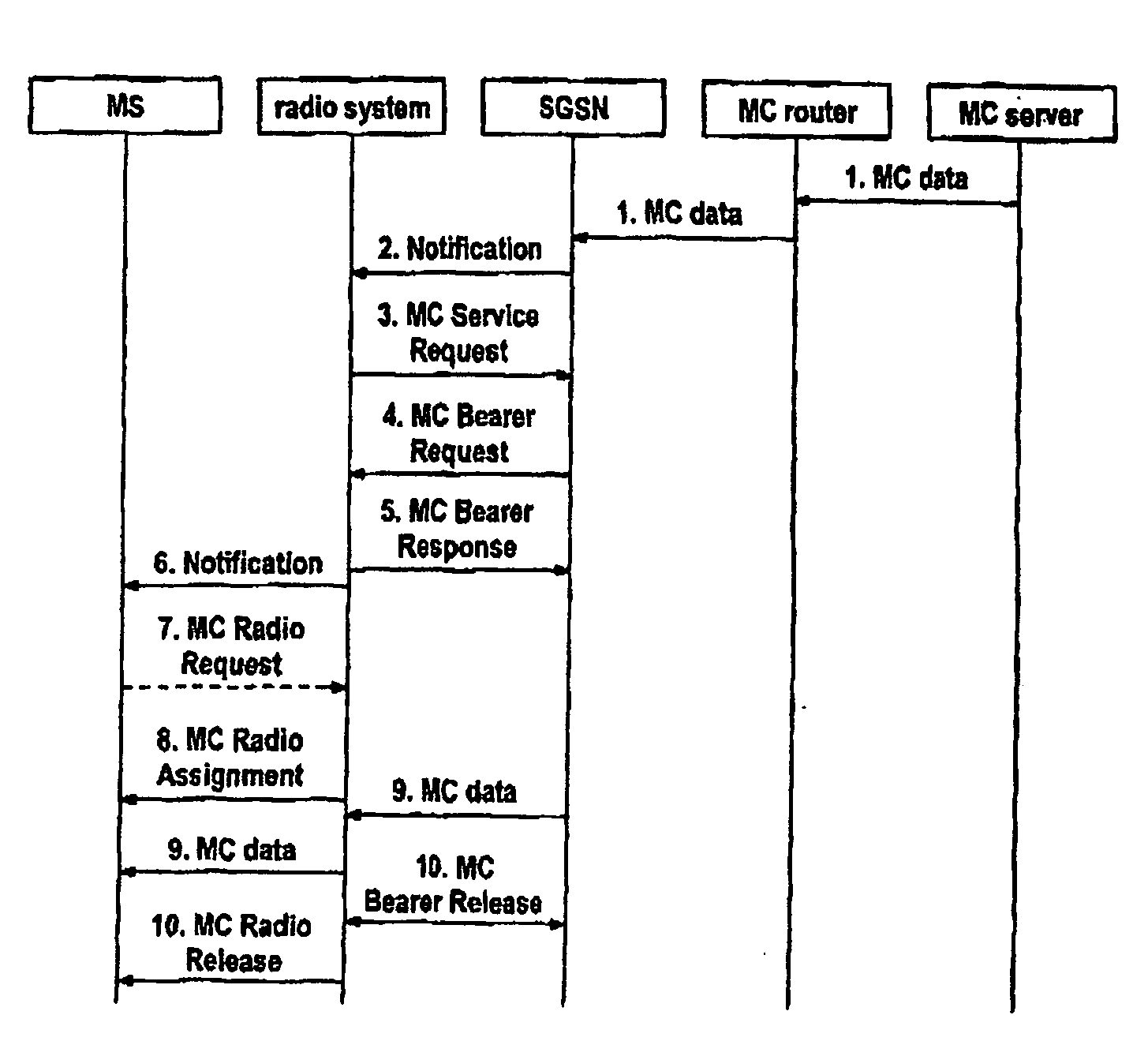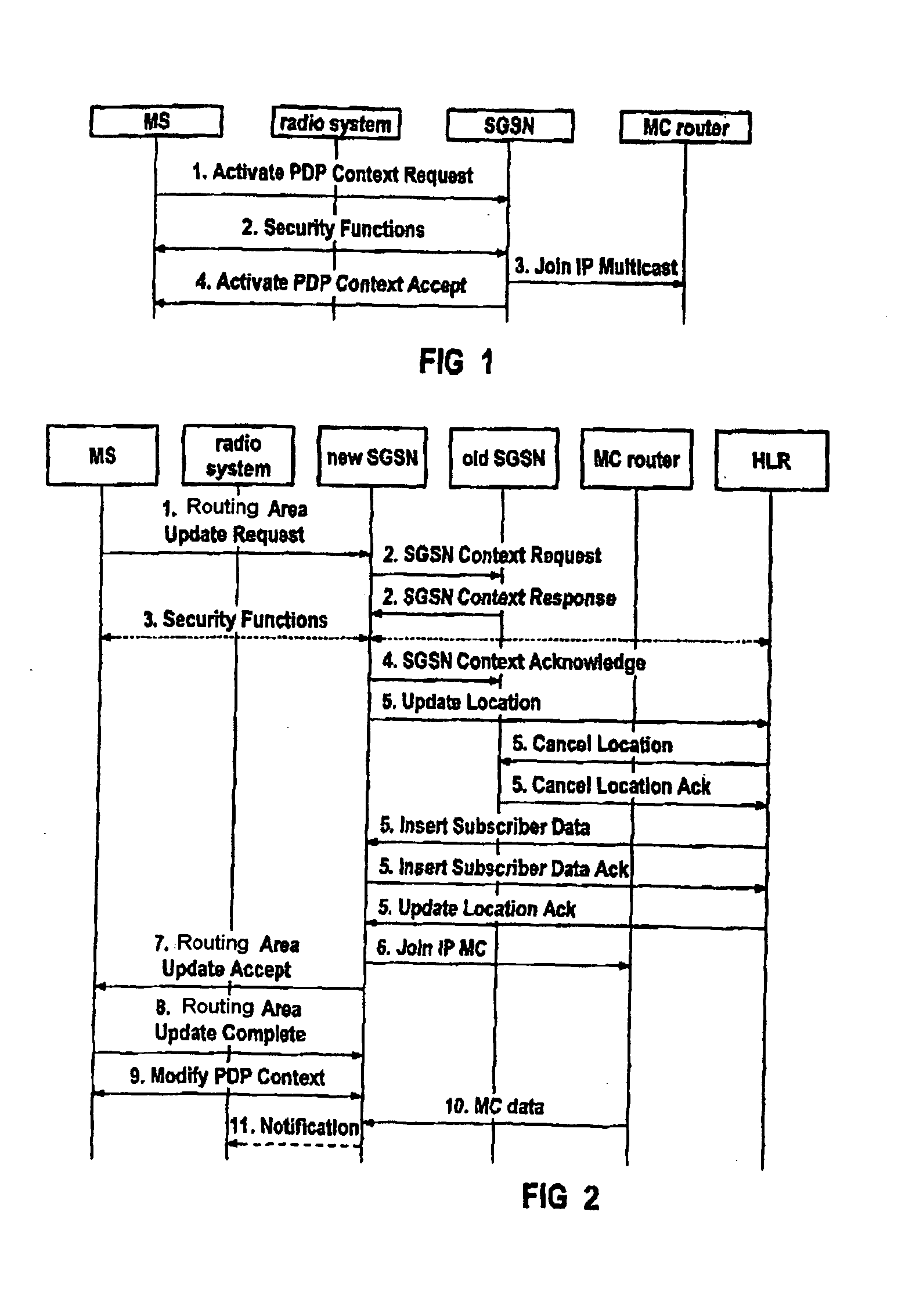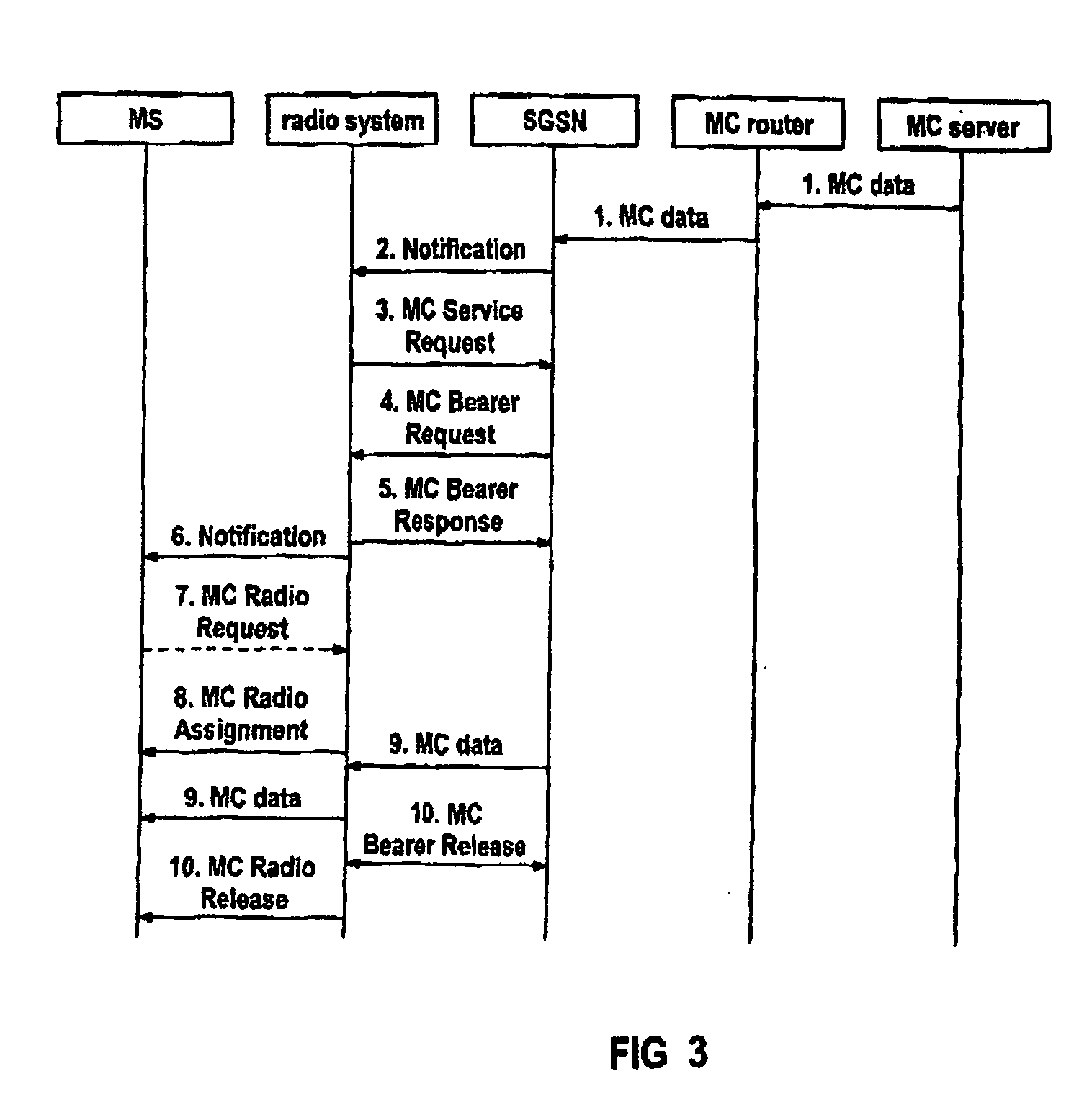Method and mobile communication network for providing multicast and/or broadcasting services
a mobile communication network and multicast technology, applied in the direction of wireless commuication services, data switching networks, broadcast service distribution, etc., can solve the problem that multicast services do not ensure efficient use of resources, and achieve the effect of ensuring the mobility of mobile communication units
- Summary
- Abstract
- Description
- Claims
- Application Information
AI Technical Summary
Benefits of technology
Problems solved by technology
Method used
Image
Examples
Embodiment Construction
[0042]FIG. 1 shows the activation of an MC service, in the form of a block diagram. The user or an application which is provided in a corresponding manner on a mobile communication unit MS initiates the use of an MC service. In a step 1 which is similar to that for activation of a PtP service, the mobile communication unit MS sends an activation request, a so-called activate PDP context request, to an associated communication node in the core network, that is to say in general to a responsible SGSN. This activate PDP context request comprises the indication of the access point name (APN), the PDP address, the QoS profile, the extended or MC NSAPI and further parameters which are defined for a PtP service. The APN indicates the home network or the administrative domain to which the MC IP address belongs. This can be used to derive an appropriate GGSN, for example if a PtP service is being activated rather than an MC service. The PDP address corresponds to the IP MC address to which t...
PUM
 Login to View More
Login to View More Abstract
Description
Claims
Application Information
 Login to View More
Login to View More - R&D
- Intellectual Property
- Life Sciences
- Materials
- Tech Scout
- Unparalleled Data Quality
- Higher Quality Content
- 60% Fewer Hallucinations
Browse by: Latest US Patents, China's latest patents, Technical Efficacy Thesaurus, Application Domain, Technology Topic, Popular Technical Reports.
© 2025 PatSnap. All rights reserved.Legal|Privacy policy|Modern Slavery Act Transparency Statement|Sitemap|About US| Contact US: help@patsnap.com



